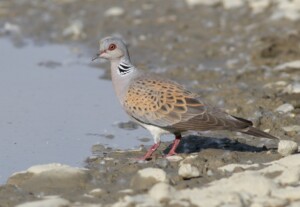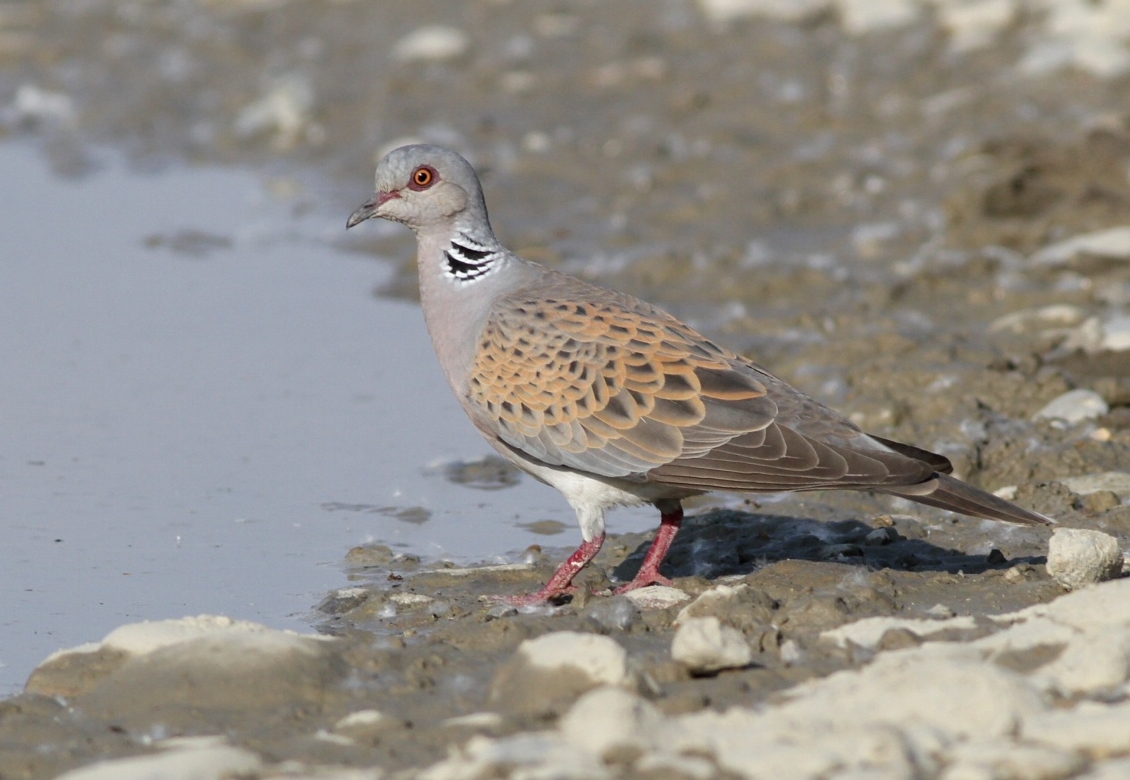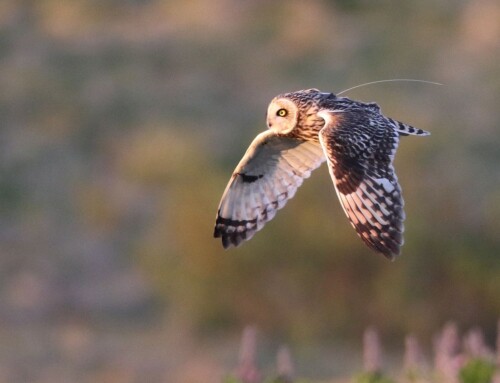
LINKED PAPER
Searching for the causes of decline in the Dutch population of European Turtle Doves (Streptopelia turtur). De Vries, E. H. J., Foppen, R. P., Van Der Jeugd, H., & Jongejans, E. 2022. IBIS. DOI: 10.1111/ibi.13031. VIEW
The European population of Turtle Doves (Streptopelia turtur) has suffered a severe decline of almost 80% since 1980. However, the precise reasons for this sharp drop are still unknown, which makes it challenging to implement effective conservation measures. While some studies have explored the effects of specific stressors on certain life stages of the Turtle Dove, there is a lack of an overall analysis of multiple stressors across the life cycle of this species (Browne et al. 2005, Eraud et al. 2009). To address this knowledge gap, a team of Dutch ornithologists conducted an extensive literature search and combined it with an age-structured population model to identify the most vulnerable life stages.
Fewer clutches
The researchers found that two key factors are responsible for the decline in Turtle Dove populations: the number of clutches and juvenile survival. The decrease in the number of clutches is likely due to lower habitat quality resulting from agricultural intensification. The removal of hedgerows and the disappearance of weeds on farmlands reduces foraging and breeding opportunities for the Turtle Doves. Consequently, most couples only rear one clutch instead of the two (Browne & Aebischer 2004). Fewer clutches mean fewer Turtle Doves.

Figure 1. Population decline of the Turtle Dove in Europe (open circles) and the Netherlands (filled circles).
Three threats
The factors affecting juvenile survival are more challenging to identify. The researchers believe that multiple stressors are at play, including hunting, the degradation of wintering habitats, and the spread of diseases. The hunting pressure on Turtle Doves is high, with an estimated 2 to 4 million birds legally shot each year (Lormée et al. 2019). And many more are killed by unregulated hunting during migration and on their wintering grounds in Africa. Moreover, Turtle Doves that reach Africa often encounter degraded habitats due to agricultural intensification (Eraud et al. 2009). In addition to hunting and habitat loss, the emergence of new diseases, such as the protozoan Trichomonas gallinae, poses a significant threat to the species (Stockdale et al. 2015). These threats to juvenile survival also impact adult survival. Therefore, an international species action plan that considers the entire life cycle of the Turtle Dove is necessary to prevent local extinction.
References
Browne, S.J. & Aebischer, N.J. (2004). Temporal changes in the breeding ecology of European Turtle Doves Streptopelia turtur in Britain, and implications for conservation. Ibis 146: 125– 137. VIEW
Browne, S.J., Aebischer, N.J. & Crick, H.Q.P. (2005). Breeding ecology of Turtle Doves Streptopelia turtur in Britain during the period 1941–2000: an analysis of BTO nest record cards. Bird Study 52: 1–9. VIEW
Eraud, C., Boutin, J.M., Rivière, M., Brun, J., Barbraud, C. & Lormée, H. (2009). Survival of Turtle Doves Streptopelia turtur in relation to western Africa environmental conditions. Ibis 151: 186– 190. VIEW
Lormée, H., Barbraud, C., Peach, W., Carboneras, C., Lebreton, J.D., Moreno-Zarate, L., Bacon, L. & Eraud, C. (2019). Assessing the sustainability of harvest of the European Turtle-dove along the European western flyway. Bird Conservation International 30: 506– 521. VIEW
Stockdale, J.E., Dunn, J.C., Goodman, S.J., Morris, A.J., Sheehan, D.K., Grice, P.V. & Hamer, K.C. (2015). The protozoan parasite Trichomonas gallinae causes adult and nestling mortality in a declining population of European Turtle Doves, Streptopelia turtur. Parasitology 142: 490– 498. VIEW
Image credits
Top right: European Turtle Dove (Streptopelia turtur) | Andrej Chudy | CC BY-SA 2.0 Wikimedia Commons
Blog posts express the views of the individual author(s) and not those of the BOU.
If you want to write about your research in #theBOUblog, then please see here



